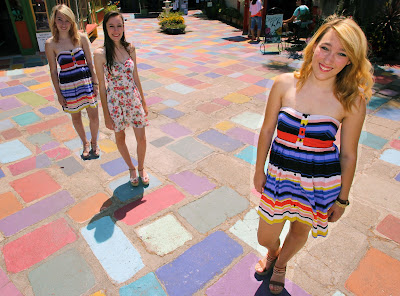 |
| Advanced photo students use the classroom lab to work on creating their blogs. Photo by Jessica Young. |
With my advanced photo class, I decided that sharing their work beyond my classroom was an important part of their experience. As a result, I crafted this blogging project. For each assignment the photo students complete, they will be writing blog entries and posting their photos. It is my hope that they will become accustomed to writing about their artistic process and sharing their work with the world.
I have set up the assignments so that the students complete the following with each post: a brief summary of the assignment (in their own words), a discussion of the process it took for them to create the images and an evaluation of their work. They will also be posting the pictures that they turn in, with captions and bylines. The final component of their blogging assignment is to comment on the work of their peers. I think this element will help them practice writing about photography in a way that is both professional and constructive.
As of today, all of the students have blogs up and running with their first posts. Some struggled more than others, but it appears that everyone is getting the hang of it. While there were some groans and rolled eyes when I reminded them about our process, I think this is a component of the class that the students will enjoy. I also have enjoyed reading their posts so far and sharing their blogs with our faculty. It is going to be a great way to showcase the work we are doing in class every week.
 |
| Advanced photo students work on creating their blogs during class time. Photo by Jessica Young. |



